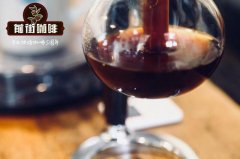What's so special about African Ethiopian coffee? what's the best coffee in Ethiopia?

Professional coffee knowledge exchange more coffee bean information please follow the coffee workshop (Wechat official account cafe_style)
Brief introduction of Qianjie Ethiopian Coffee
Ethiopia is an underdeveloped country located in northeast Africa, but this country is a famous coffee producer in the world.
Ethiopia has the most diverse coffee ecosystem in the world (forest coffee, semi-forest coffee, pastoral coffee and plantation coffee), which enables the preservation of its rich Arabica genes, coupled with multiple treatments of sun, water and semi-washing, showing a complex and varied flavor. It can be said that most of the "taste spectrum" of coffee producing areas around the world can be drunk here, reflecting Ethiopia's inclusive "king flavor". In addition, Ethiopia is the cradle of Arabica coffee beans, and growing, stir-frying and brewing coffee are unique local cultural heritage.
Yirga Cheffe is a small town in eastern Egypt, 1800-2000m above sea level. The ancient saying "Yirga" means "settle down" and "Cheffe" means "wetland". Yejaschen, which is attached to the Sidamo region, is very popular in the world boutique coffee circle because of its unique jasmine fragrance and citrus acid. This special taste is also known as "Yejashifen" taste. According to the defect rate of raw beans, Yejia snow caffeine can be divided into five grades of G1~G5 from good to bad. It is generally washed with water, but there are also a small number of excellent beans intended to be insolated to enhance the charming fruit aroma and mellow thickness.
The Sidamo production area is very close to Yega Cherophine, and its flavor is also very similar. After delicate washing or sun treatment, it also has floral and citrus flavors, soft sour taste and the same price as Yega Chet. Like Yejasuffe, this variety has medium-sized beans, but there are also small-grain varieties with dwarf plants. Sidamo coffee is generally light to medium roasted to retain the bright sour taste and intoxicating floral aroma of the variety.
Harar caffeine is famous for its miscellaneous fragrance and is listed as the "Ethiopian double star" alongside Yega Schiffe. The climate of the Hara area is dry and cool, all using the sun treatment method, if the defective beans are picked clean, it is easy to drink the berry flavor, with a slightly pleasant fermented miscellaneous aroma. However, farmers here are used to mixing fine products with commercial grade, and the quality of coffee beans is not stable.
Production area: Aricha/Gedeo
Coffee variety: Heirloom
Planting altitude: 1950m 2100m
Treatment: sun treatment, scaffolding drying
Yega Xuefei, one of the nine major producing areas in Ethiopia, except for a small number of powerful coffee farms, mostly belongs to the pastoral coffee model. Yega Xuefei's grading system is not based on the number of eyes, but on the proportion of defective beans in the total number of raw beans.
After manual selection, the lowest defect rate can be rated as the highest level of Grade 1.
END
Important Notice :
前街咖啡 FrontStreet Coffee has moved to new addredd:
FrontStreet Coffee Address: 315,Donghua East Road,GuangZhou
Tel:020 38364473
- Prev

What looks like a baking flaw? What is the flavor of baking defects? What are the effects of flavor?
Professional coffee knowledge exchange more information about coffee beans please follow the coffee workshop (Wechat official account cafe_style) medium American roasting. If it is a little darker than medium, it may be a city, also known as normal, brown: make the color as dark as possible without oil. Viennese American term meaning slightly darker than medium baking. This kind of baking will bring
- Next

Ethiopian Yega Chefe Coffee characteristic taste description of Yega Chevy Coffee
Professional coffee knowledge exchange more coffee bean information please follow the coffee workshop (Wechat official account cafe_style) in front of the street Yega Xuefei red jade coffee flavor introduction when it comes to Yega Xuefei, acid is its typical feature. But I have to mention that apart from the taste, it is the way it is handled. In fact, the handling of coffee
Related
- Beginners will see the "Coffee pull flower" guide!
- What is the difference between ice blog purified milk and ordinary milk coffee?
- Why is the Philippines the largest producer of crops in Liberia?
- For coffee extraction, should the fine powder be retained?
- How does extracted espresso fill pressed powder? How much strength does it take to press the powder?
- How to make jasmine cold extract coffee? Is the jasmine + latte good?
- Will this little toy really make the coffee taste better? How does Lily Drip affect coffee extraction?
- Will the action of slapping the filter cup also affect coffee extraction?
- What's the difference between powder-to-water ratio and powder-to-liquid ratio?
- What is the Ethiopian local species? What does it have to do with Heirloom native species?

